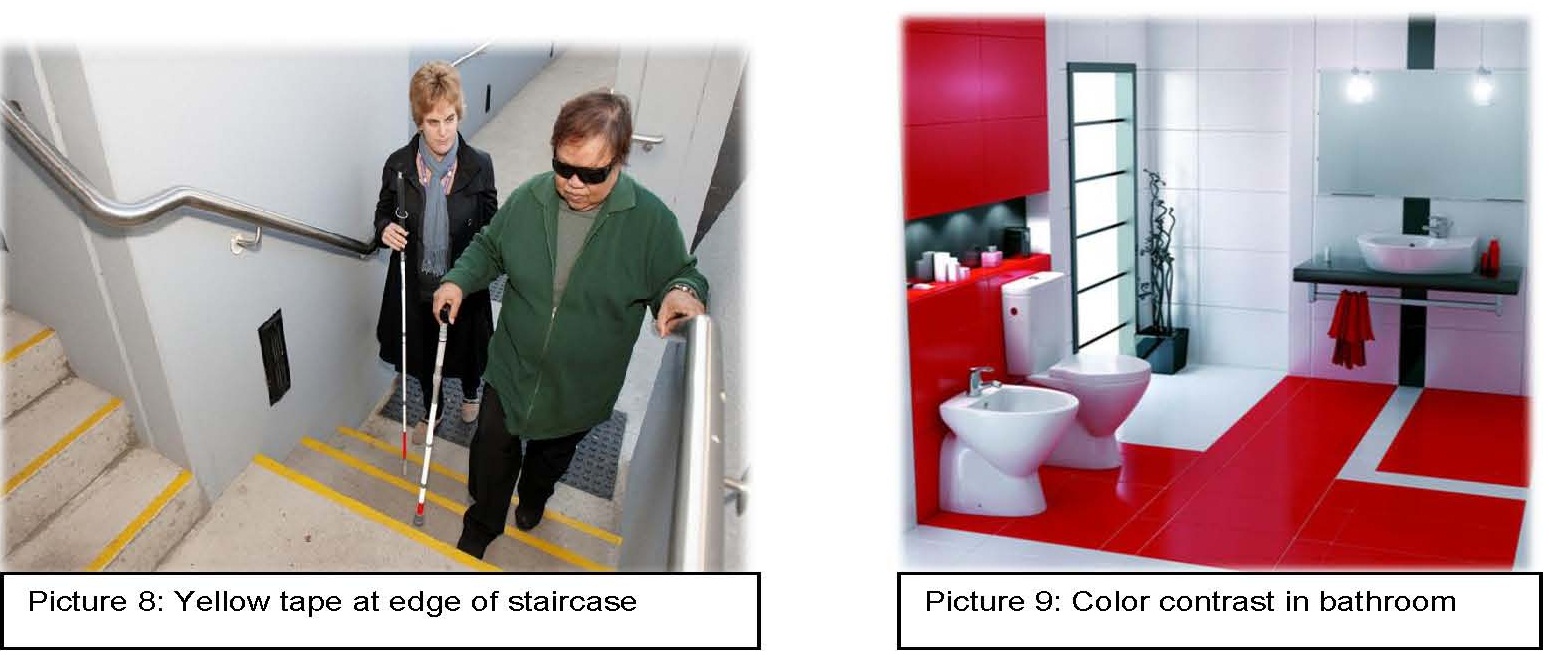Introduction
Based on National Eye Survey 1996 conducted in Malaysia, percentage for low vision population was 2.44%. This means, there will be two (2) low vision people among 100 people of Malaysian citizen. Two main causes for low vision were:
- Uncorrected refractive error
- Cataract
There was a study in Public Health discipline involving four (4) countries which were Peru, Nepal, Tanzania and India, showed that low vision people whether young or older people will having problems in doing their daily routine such as:
- See near or doing near task like reading and writing
- See far object
- Walking from one place to another
These limitations will caused them to have negative thinking such as:
- Stress
- Depressed
- Hot temper
- Sad and Frustrated
- Low confident
- Very dependent on their families
- Thinking that they burden their families
- Inferiority complex
They were also victims of name calling and bullying in society. These people really need help in terms of moral, emotional and material support from responsible authority to give them light and hope.
How To Help Low Vision Patient?
1. Give opinion in choosing Low Vision Aids
- Optometrist will choose the appropriate Low Vision Aids based on patients’ vision and patient needs.
- Patients will be given chance to try the Low Vision Aids
- Patients can choose which Low Vision Aids that meet their needs
2. Help, teach and train patient to use the Optical Low Vision Aids  3. Give opinion and teach Low Vision Patient with Electronic Low Vision Devices Electronic Low Vision Devices are as follow:
3. Give opinion and teach Low Vision Patient with Electronic Low Vision Devices Electronic Low Vision Devices are as follow:
- Closed Circuit Television (CCTV)
- Portable video magnifier
- Pocket Magnifier
- Talking Watch &Talking Calculator
- E-Reader
- Smart phone
- Voice Interface and etc.

- Optometrist will teach and guide patient the right way to use the Electronic Low Vision Devices
4. Give opinion and teach low vision patient how to use non-optical aids
- Example of non-optical aids are as follow:
a. Environmental Modification b. White Cane Technique



 6. Referring low vision patient to government agencies: a. To Social Welfare Department (SWD)
6. Referring low vision patient to government agencies: a. To Social Welfare Department (SWD)
- Register as People with Disabilities (PWDs)
- Help low vision patients to buy assistive devices such as glasses, optical low vision aids and electronic low vision aids.
- Provide rehabilitation program and skills courses for low vision patient such as:
-
- Institute of Hope Park, Central Agricultural, Temerloh, Pahang
- Garden Light Institute, Center for Agriculture, Sandakan, Sabah
-
b. To Education Department
- Help low vision patient to be placed in Special School for Visually Impaired.
c. To School
- Inform the class-teacher on patient’s needs.
- Patient will get advantages based on the table below:

7. Referring low vision patient to non-government agencies
Non-government agencies such as:
- Malaysian Associations of Blindness (MAB)
- Malacca Associations of Blindness
- Sabah Associations of Blindness
- Miri and Bintulu Associations of Blindness
- Purpose:
- To help Low Vision patient with Orientation and Mobility Technique
- To help low vision patient in Daily Living Skills programs
- To help Low Vision Patient learn vocational training courses
Conclusion
Good news for Low Vision Patient, they still have hope to see as sighted people via low vision aids such as optical, electronic and non optical devices. These assistive devices are able to obtain from allocation provided by agencies. The most important thing is, they need to work hard to learn and adapt with the devices so that it will work for them in their daily living and thus help to increase self-reliant and self-potential.
References
- Zainal, M., Ismail, S.M., Ropilah, A. R., Elias, H., Arumugam, G., Alias, D., Fathilah, J., Lim, T. O., Ding, L. M. & Goh, P. P., 2002. Prevalence of Blindness and Low vision in Malaysian Population: Results from the National Eye Survey 1996. Br J Ophthalmol. 86: 951–956.
| Last Reviewed | : | 20 August 2014 |
| Writer | : | Pn. Nurul Hafizah bt. Mohd Norizan |
| Accreditor | : | Pn. Hafizah bt. Abu Yamin |







